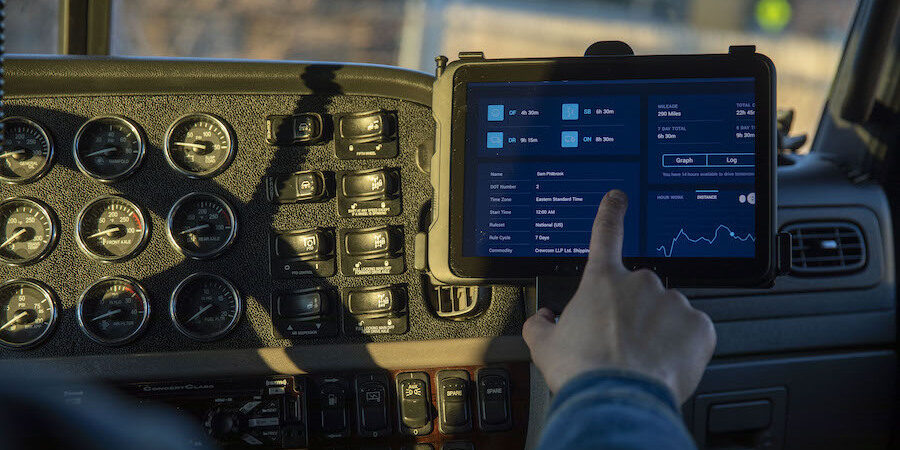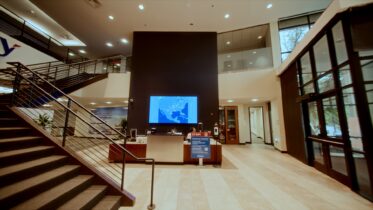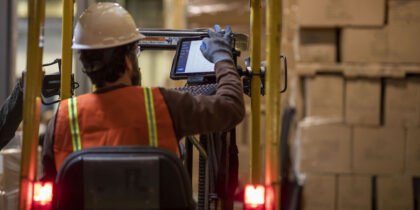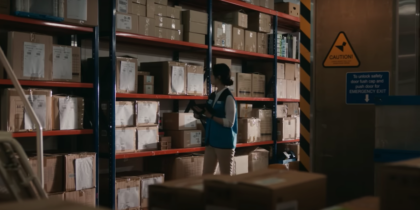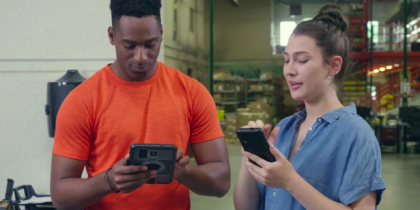Long-haul truckers love to drive. But it goes deeper than that. They love the open road, the peace and quiet, and, perhaps most of all, the independence. No boss breathing down their necks. No cubicle. No computer. They are the last cowboys and cowgirls of the open road in America. Sounds a bit over romanticized? Just spend a day hanging around a truck stop like the Samsung Transport & Logistics team did.
Under the surface you will find an independent spirit dwelling inside the cab of every long-haul truck. Every independent trucking company wishes they could clone their top drivers – but as in many industries today, top talent is hard to come by, and even harder to retain. Knowing the best drivers love their jobs, value their independence, and have an entrepreneurial mindset towards keeping their eye on the bottom line, trucking organizations must realize that the legacy, proprietary technology they have been reliant on for decades isn’t going to cut it with cream-of-the-crop long-haulers, especially as younger drivers enter this unique workforce.
Here’s a look at some of the reason why tech has become crucial to attracting and retaining top talent in today’s trucking environment.
Legacy technology hinders independence
Technology is often perceived by the truck-driving labor force to be a tool of management, in collusion with government regulations, intended to restrict driver freedom. Sure, technology in the cab is a necessary evil, but when it becomes a roadblock that winds up compromising driver satisfaction, costing precious driving hours, and reducing deserved income, it can be downright intrusive for the driver, and a deal-breaker to dedicated, efficient drivers trucking companies really seek to hire.
Technology in the cab used to save the business money, now it can cost great hires
A large percentage of in-cab driver applications, running on a legacy mobile data terminal, require a workaround. The driver can’t actually use the cumbersome technology in real time but must keep manual notes on a steno pad, because the driver software applications and proprietary technology are a collection of isolated apps that are not intuitive or integrated to share information. So, instead of reducing paperwork and saving precious time, the manual systems end up taking even more effort. For technology to help the modern-day driver with real problems, it needs to reduce or remove inter-dependency between manual processes; improve driver-to-driver and driver-to-manager communications; support real-time handling of critical event situations; de-tether the driver from a single location to complete critical outside-the-cab job tasks; provide real-time access to weather and traffic warnings, alternate routing options, and guides to loading docks and vehicle inspections; and enable them to update their load status so they can get paid as quickly as possible. What does a modern solution that provides all of these features look like? We’ll cover that in the next section.
How to modernize fleet management
Get your free guide to improving fleet performance and profitability with in-cab mobile technology. Download Now
Outdated technology and driver success aren’t meshing
So what does a technology solution that cost-effectively delivers results to the trucking company, while simultaneously enabling drivers to efficiently do their jobs, look like? It starts with modernizing the entire hardware experience with Samsung devices, providing a single pane of glass where drivers can intuitively record and manage their job activities through a familiar, unified interface. Coupled with modern, smart fleet management software—like that offered by connected-vehicle technology expert, Platform Science—Samsung Connected Fleet Solutions deliver a single, integrated experience that guides drivers through daily, work-related tasks, making a significant impact on their overall quality-of-life while out on the open road.
Samsung Connected Fleet Solutions for modern fleet management also improves driver retention, serving as a strategic recruiting tool that brings new and up and coming drivers into the industry. Today’s problem is, drivers know very well the technological convenience that’s possible because they use modern smart phones and tablets in their personal lives. Rather than struggle with the fixed mobile data terminal and outmoded technology inside the cab, drivers often find it easier to just pick up their smartphone and call the dispatcher for assistance—even knowing there will be a wait.
Familiar mobile smart-tech without budget-busting TOC
Believe it or not, the trucking industry was an early adopter of state-of-the-art technology. Companies were highly motivated to comply with new regulations using fixed, cab-mounted mobile data terminals. But because these legacy, fleet-wide systems required substantial initial and continued financial outlay, understandably, trucking companies have wanted to get the most from their investment.
Because drivers are able to quickly and easily operate and gain value from Samsung Connected Fleet Solutions, trucking companies can forego off-putting, arcane training programs and their associated costs. Samsung smart fleet management solutions are fully integrated and feature auto-fill capabilities, making it easy to securely duplicate information across applications. Drivers can finally throw away handwritten notes and cease tedious, time-consuming re-entry. Along with the benefit of significant reduction in turnover, managers will find their drivers to be much more self-sufficient.
Samsung ruggedized devices combined with smart fleet management software = an easy-to-use system that enables drivers with greater independence and more road time. So, if you’ve been wondering how to attract, and keep, the “good ones”, long-haul drivers themselves say this is the way to their heart… and wallet.
